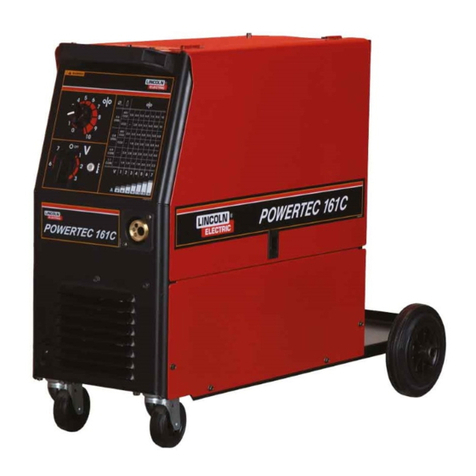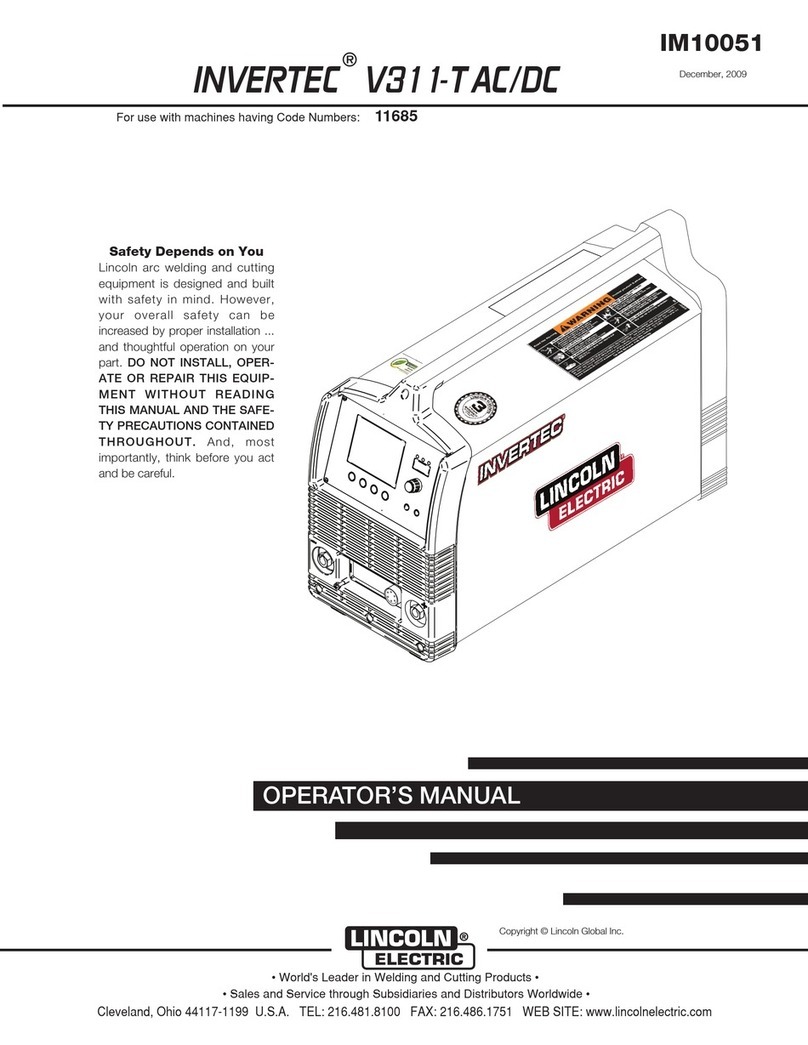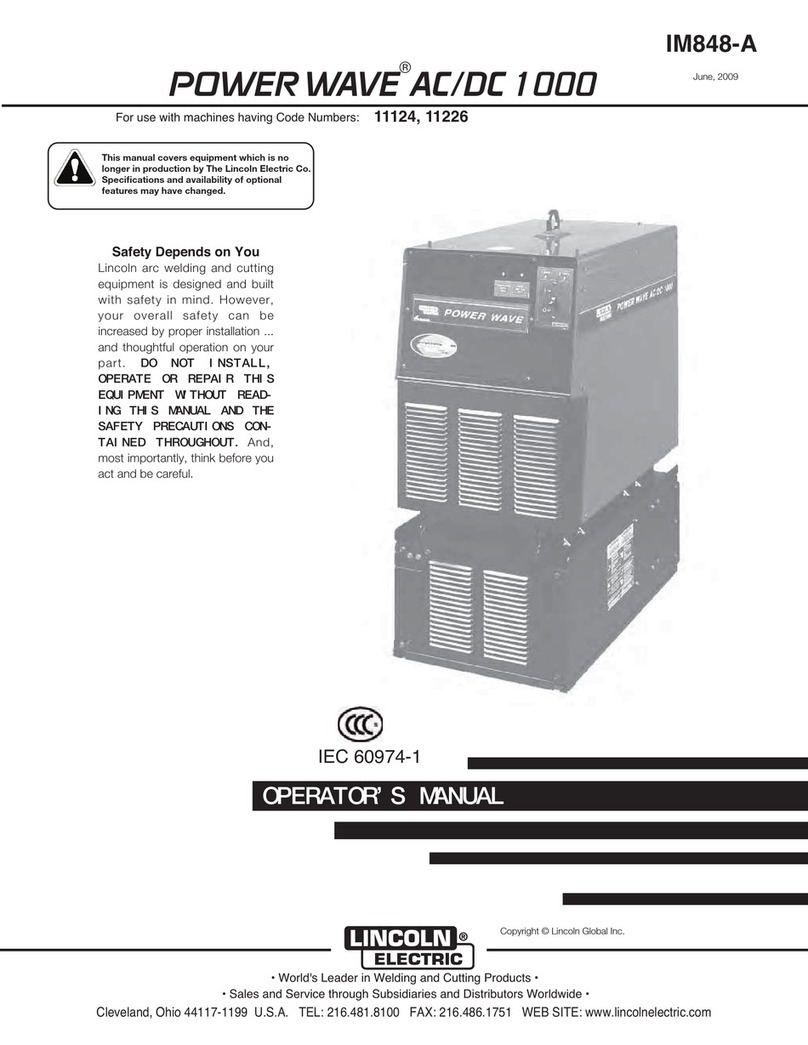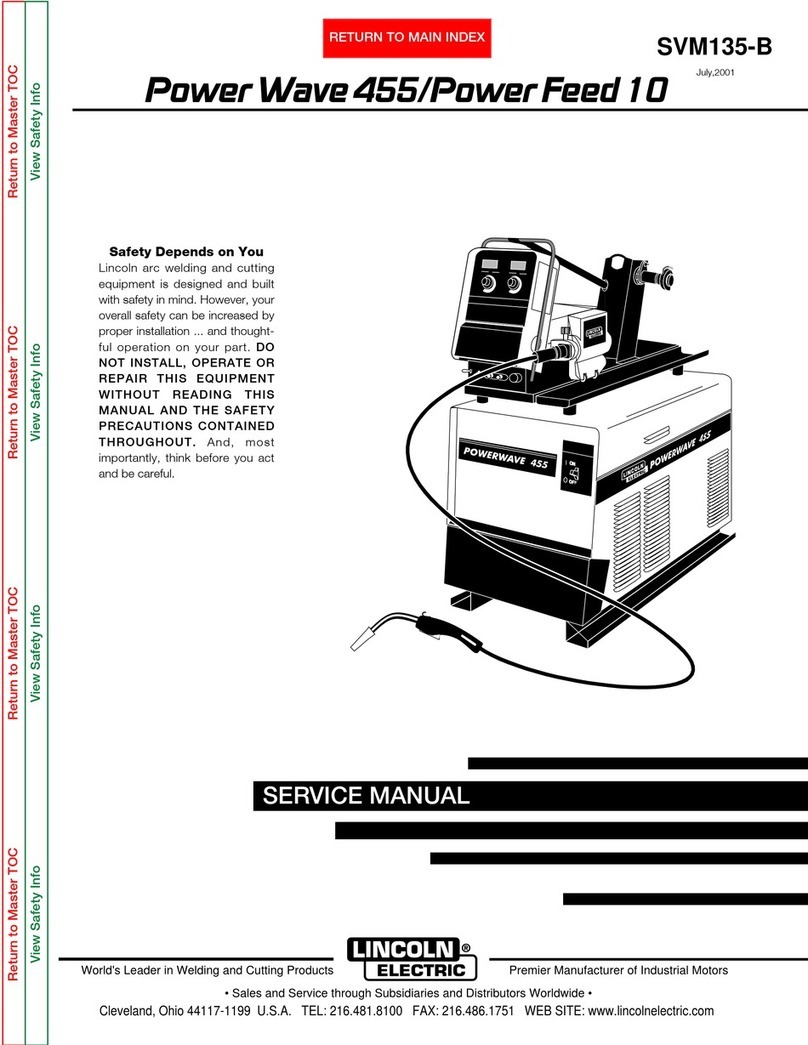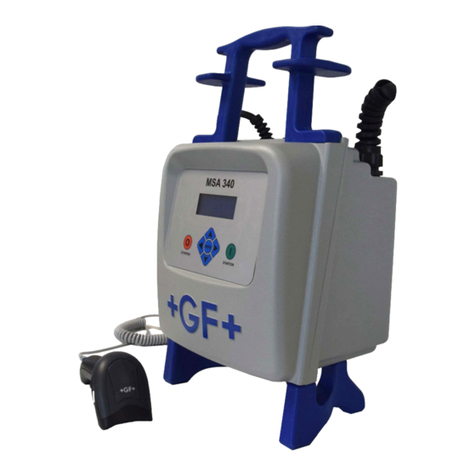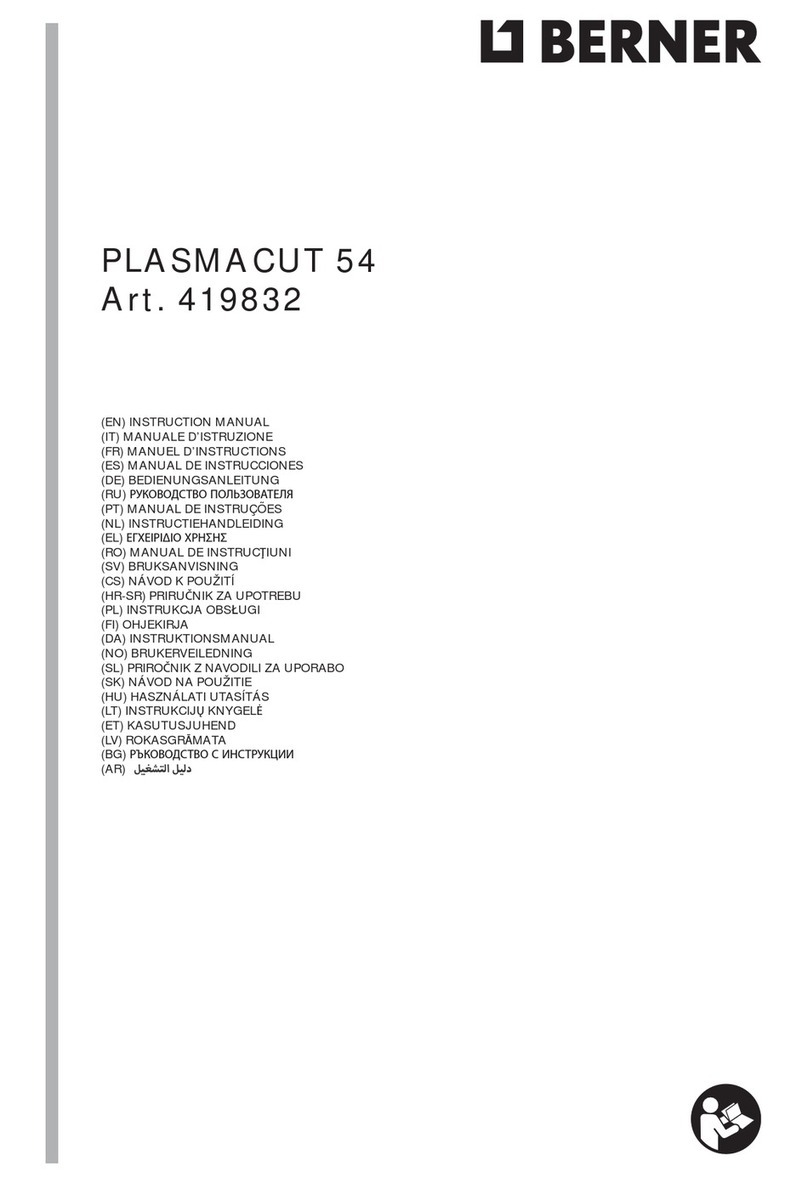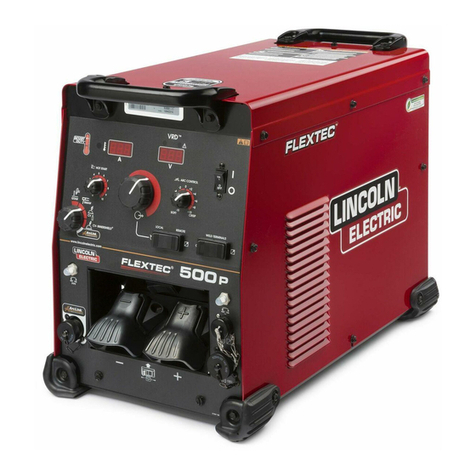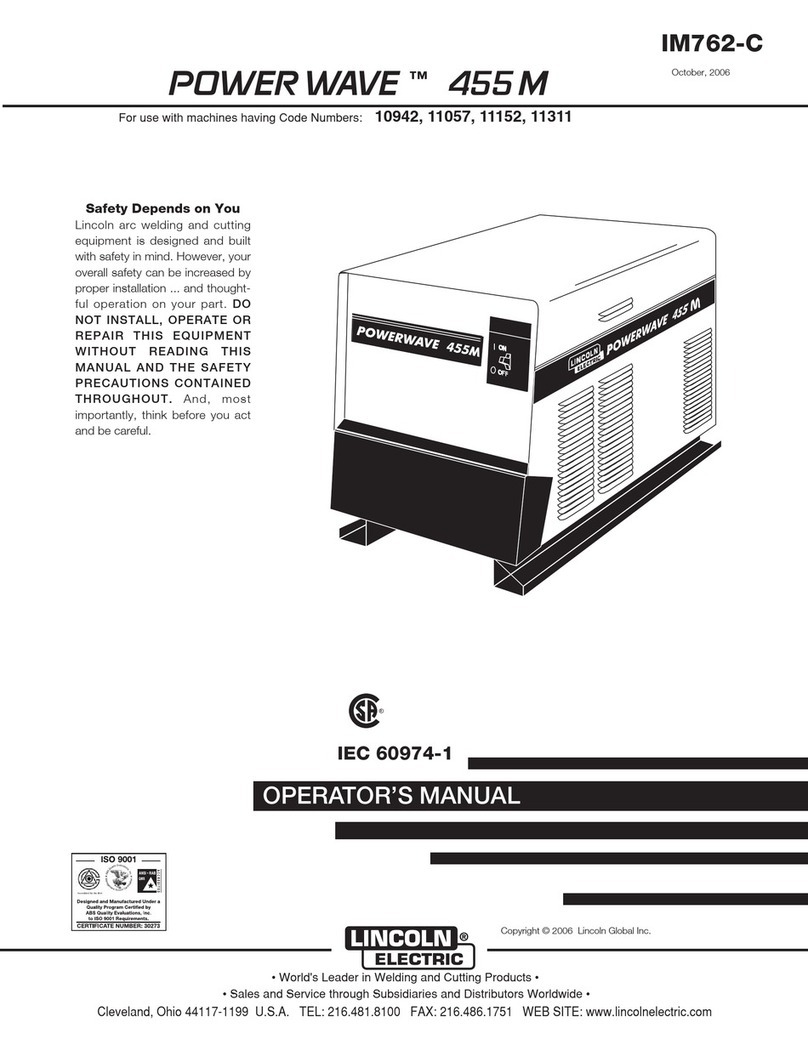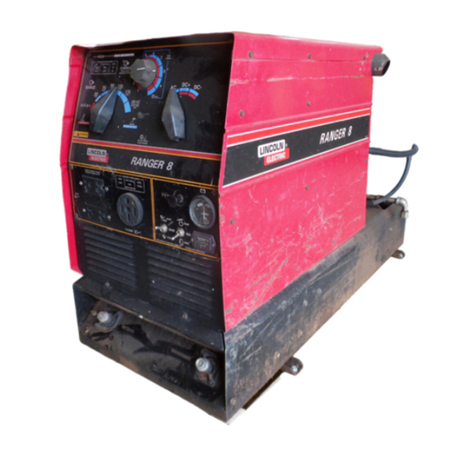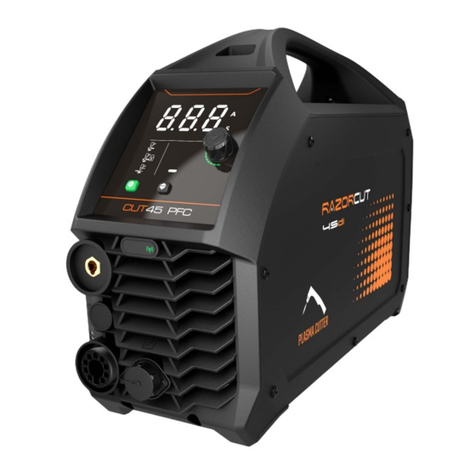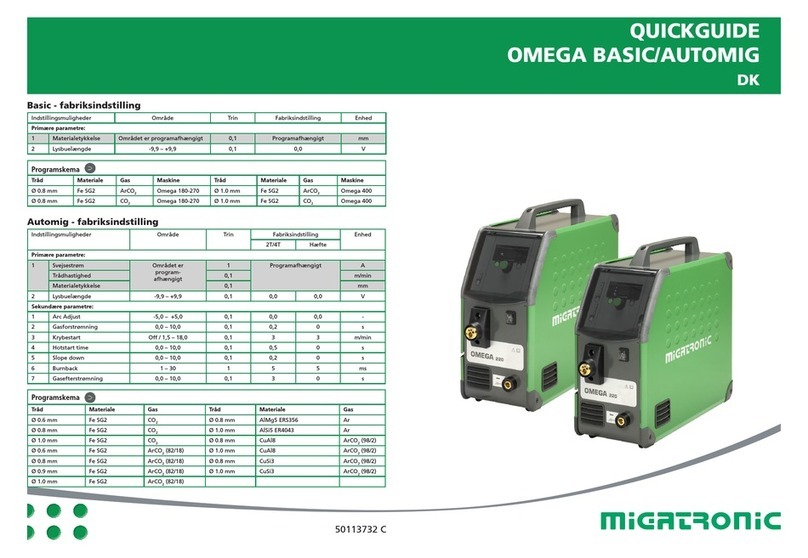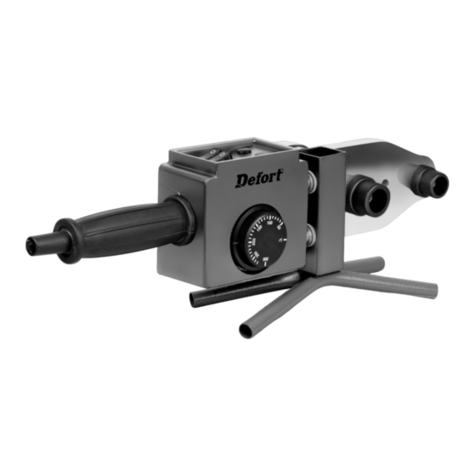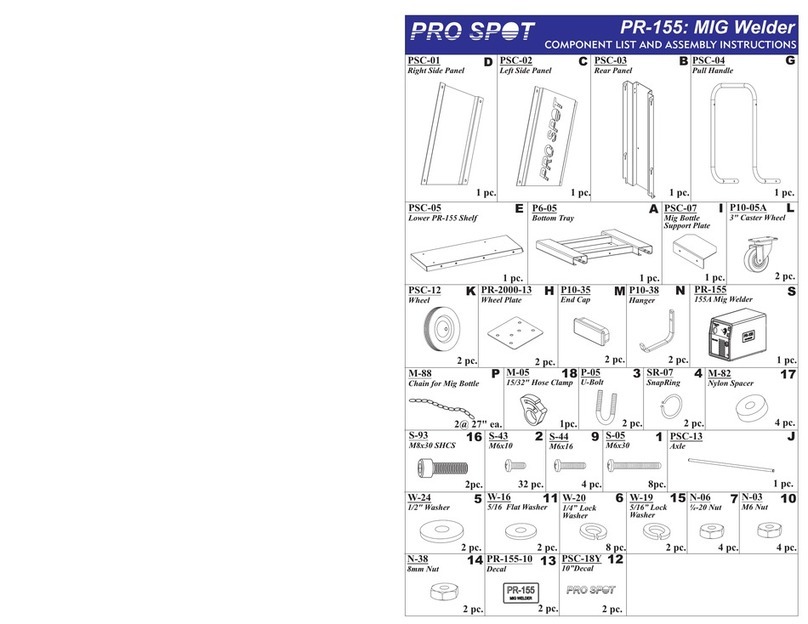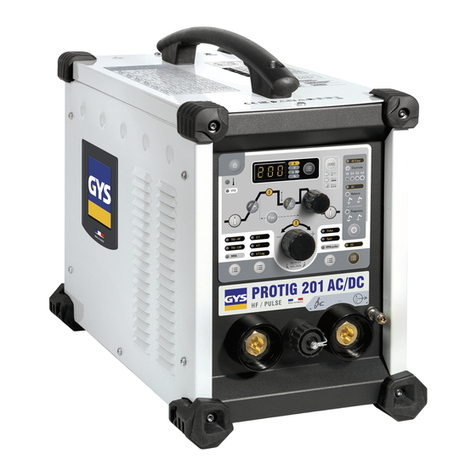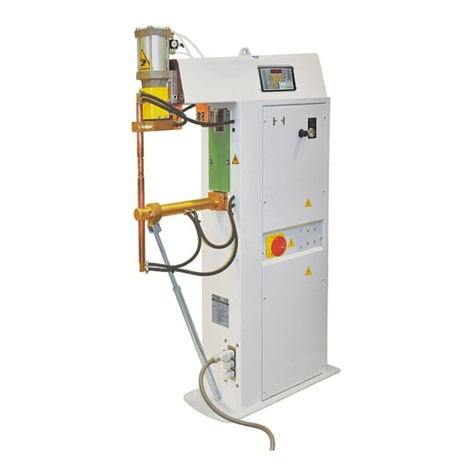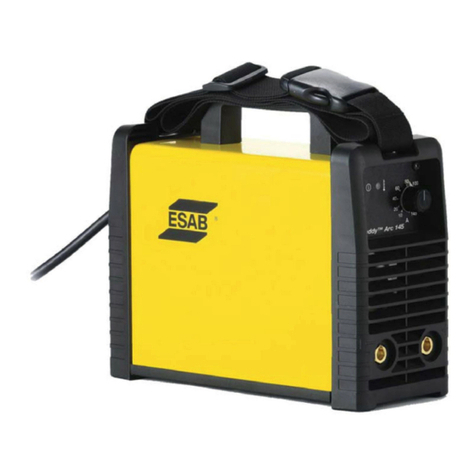ELECTRIC SHOCK
CAN KILL.
3.a.
The electrode and work (or ground) circuits are
electrically“hot”whenthewelderison.Do
nottouchthese“hot” partswithyourbareskinorwetclothing.
Weardry,hole-freeglovestoinsulatehands.
3.b.
Insulateyourselffromworkandgroundusingdryinsulation.
Makecertaintheinsulationislargeenoughtocoveryourfullarea
ofphysicalcontactwithworkandground.
In addition to the normal safety precautions, if
welding must be performed under electrically
hazardous conditions (in damp locations or while
wearing wet clothing; on metal structures such as
floors, gratings or scaffolds; when in cramped
positions such as sitting, kneeling or lying, if there
is a high risk of unavoidable or accidental contact
with the workpiece or ground) use the following
equipment:
•
SemiautomaticDCConstantVoltage(Wire)Welder.
•
DC Manual (Stick)Welder.
•
ACWelderwithReducedVoltageControl.
3.c.
Insemiautomaticorautomaticwirewelding,theelectrode,
electrodereel, welding head, nozzle or semiautomatic welding
gun are also electrically“hot”.
3.d.
Alwaysbesuretheworkcablemakesagoodelectrical
connection with the metal being welded. The connection should
beascloseaspossibletotheareabeingwelded.
3.e.
Groundtheworkormetaltobeweldedtoagoodelectrical(earth)
ground.
3.f.
Maintain the electrode holder, work clamp, welding cable and
weldingmachineingood,safeoperatingcondition.Replace
damaged insulation.
3.g.
Neverdiptheelectrodeinwaterforcooling.
3.h.
Neversimultaneouslytouchelectrically“hot”partsofelectrode
holdersconnectedtotwoweldersbecausevoltage
betweenthe
two can bethetotal of theopencircuitvoltage ofboth
welders.
3.i.
Whenworkingabovefloorlevel,useasafetybelttoprotect
yourselffromafallshouldyougetashock.
3.j.
Also see Items 6.c. and 8.
ARC RAYS CAN BURN.
4.a.
Useashieldwiththeproperfilterandcoverplatestoprotectyour
eyesfromsparksandtheraysofthearcwhenweldingor
observingopenarcwelding.Headshieldandfilterlensshould
conformto ANSIZ87. I standards.
4.b.
Use suitable clothing made from durable flame-resistant material
toprotectyourskinandthatofyourhelpersfromthearcrays.
4.c.
Protect other nearby personnel with suitable, non-flammable
screeningand/orwarnthemnottowatchthearcnorexpose
themselvestothearcraysortohotspatterormetal.
5.a.
Weldingmayproducefumesandgases
hazardous to health. Avoid breathingthese
fumesandgases.Whenwelding,keepyourheadoutofthefume.
Useenoughventilationand/orexhaustatthearctokeepfumes
andgasesawayfromthebreathingzone.Whenwelding
hardfacing (see instructions on container or SDS)
or on lead or cadmium plated steel and other
metals or coatings which produce highly toxic
fumes, keep exposure as low as possible and
within applicable OSHA PEL and ACGIH TLV limits
using local exhaust or mechanical ventilation
unless exposure assessments indicate otherwise.
In confined spaces or in some circumstances,
outdoors, a respirator may also be required.
Additional precautions are also required when
welding
on galvanized steel.
5.b.
.Theoperationofweldingfumecontrolequipmentisaffected
byvariousfactorsincludingproperuseandpositioningof
theequipment,maintenanceoftheequipmentandthe
specificweldingprocedureandapplicationinvolved.Worker
exposure level should be checked upon installation and
periodicallythereaftertobecertainitiswithinapplicable
OSHAPELand ACGIH TLVlimits.
5.c. Do not weld in locations near chlorinated hydrocarbon vapors
coming from degreasing, cleaning or spraying operations. The
heatandraysofthearccanreactwithsolventvaporstoform
phosgene,ahighlytoxicgas,andotherirritatingproducts.
5.d. Shielding gases used for arcwelding can displace air and
cause
injuryordeath.Alwaysuseenoughventilation,especiallyin
confinedareas,toinsurebreathingairissafe.
5.e. Read and understand the manufacturer’s instructions for this
equipment and the consumables to be used, including the
Safety Data Sheet(SDS) and followyour employer’s safety
practices.SDSformsareavailablefromyourwelding
distributororfromthemanufacturer.
5.f.
Also see item1.b.




